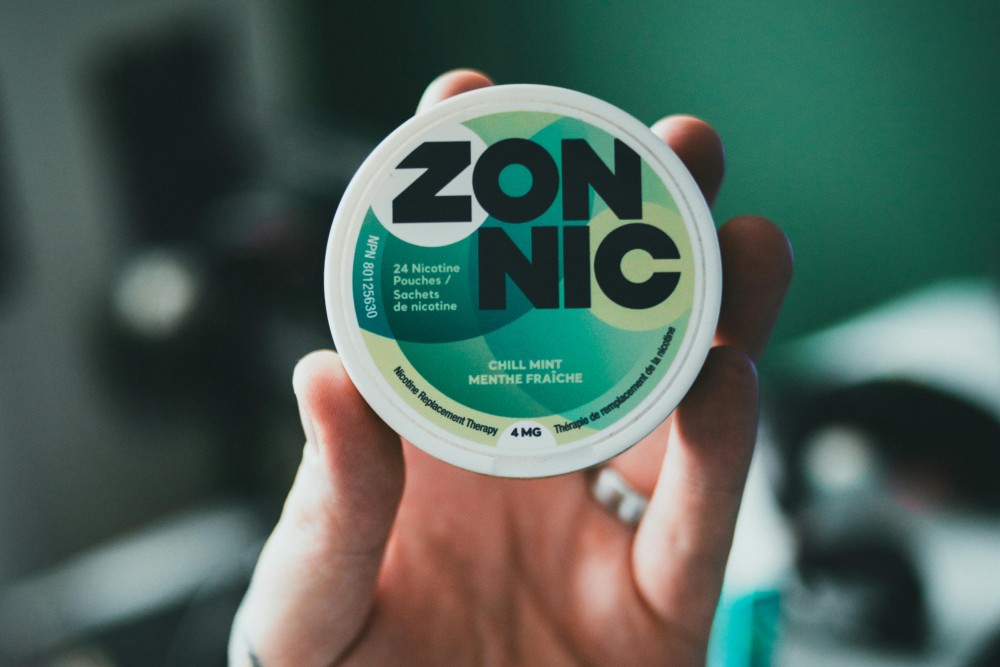Detailed guide explaining how vape devices, e-liquid, and vapor function.
By K Futur UncategorizedWhat Are Nicotine Pouches? An Introduction
Nicotine pouches are small, discreet, and smoke-free products designed to deliver nicotine through the inside of the mouth without the use of tobacco leaf. Unlike cigarettes, chewing tobacco, or vape devices, these pouches contain either synthetic or tobacco-derived nicotine, along with plant-based fibers, flavoring agents, sweeteners, and stabilizers. They are white in color, do not stain the teeth, and are often used by those seeking a cleaner, more socially acceptable way to consume nicotine.
Each pouch is pre-portioned and comes in a range of strengths, from mild to strong, to suit both new and experienced users. Flavors range from mint and citrus to coffee, berry, and more, offering variety while maintaining a smoke-free format. Since they do not require combustion, vaping, or spitting, nicotine pouches can be used discreetly in places where smoking or vaping is not allowed.
How Nicotine Pouches Work (and How to Use Them)
Nicotine pouches are designed to be placed in the mouth, specifically tucked between the upper lip and gum. Once in place, the moisture in your mouth begins to activate the pouch, allowing nicotine and flavor to slowly absorb through the soft tissues. This method of delivery offers a gradual and sustained release of nicotine, without the sharp spikes often associated with smoking or vaping.
To use a pouch correctly, take one from the can and lightly roll it between your fingers to soften it. Insert it in your upper lip area and let it rest for 20 to 40 minutes. During this time, you may experience a slight tingling or burning sensation, which is normal and usually fades within a few minutes. After use, remove the pouch and dispose of it in a trash bin or the designated section inside the can.
It is important not to chew or swallow the pouch. The juice that builds up during use can be swallowed in small amounts, but doing so excessively or with high-nicotine pouches may cause nausea, especially for beginners.
Nicotine Pouches vs. Chewing Tobacco: What’s the Difference?
Although both products are used orally, nicotine pouches are distinctly different from chewing tobacco in several important ways. Chewing tobacco contains actual tobacco leaves and typically requires the user to spit out saliva as the tobacco breaks down in the mouth. This process releases a strong flavor and is often messy, visible, and less socially acceptable.
In contrast, nicotine pouches are entirely tobacco-free, do not require chewing, and are designed to be spit-free. They use plant-based filler materials to carry purified nicotine and flavor compounds. Because they remain intact during use and do not release fibrous material into the mouth, they offer a much cleaner experience. There is no tobacco taste, and no need for disposal cups or constant spitting, making pouches easier to use in professional or public environments.
Additionally, the health risks associated with chewing tobacco — including exposure to carcinogens found in tobacco leaves — are significantly reduced with nicotine pouches, which do not contain these elements.
Are Nicotine Pouches Safer Than Smoking or Vaping?
Nicotine pouches are generally considered a lower-risk alternative to traditional tobacco products like cigarettes and chewing tobacco. They eliminate the harmful byproducts of combustion such as tar, carbon monoxide, and thousands of chemical compounds found in cigarette smoke. Compared to vaping, pouches also avoid inhalation of vaporized liquids, some of which may contain irritants or unknown long-term effects.
Because pouches are used orally and do not produce smoke or vapor, they are less likely to affect bystanders or cause indoor air pollution. They do not stress the lungs and are free of propylene glycol, vegetable glycerin, or other additives commonly found in e-liquids.
That said, nicotine is still an addictive chemical and can affect heart rate, blood pressure, and mental focus. Overuse can lead to increased dependence, and some users may experience side effects such as gum irritation, mouth dryness, or nausea. While pouches remove many of the most harmful elements found in smoking and vaping, they should still be used responsibly and with awareness of their addictive potential.
Who Should (and Shouldn’t) Use Nicotine Pouches?
Nicotine pouches are intended for adult nicotine users who are looking for a cleaner, more discreet way to consume nicotine. They are often chosen by people who are trying to quit smoking or vaping and want to manage their cravings with a less harmful alternative. Professionals, travelers, and individuals in smoke-free environments often find pouches convenient because they can be used without attracting attention or requiring a device.
However, they are not suitable for everyone. People under the legal age of purchase, pregnant or breastfeeding individuals, and those with heart conditions or sensitivity to stimulants should avoid using nicotine in any form. If you are not currently using nicotine, starting with pouches can lead to addiction and is strongly discouraged.
For those with oral health concerns, such as gum disease or frequent mouth ulcers, it is important to monitor how pouches affect your mouth over time and to rotate the position where the pouch is placed. Consulting with a healthcare provider before beginning use is advisable, especially for those with underlying medical conditions.
Potential Side Effects and Health Concerns
While nicotine pouches offer a cleaner experience compared to smoking or chewing tobacco, they are not entirely without risk. The most common short-term side effects include mouth dryness, gum sensitivity, tingling, nausea, or a mild burning sensation at the point of contact. These effects usually subside with consistent use or by adjusting the pouch’s placement within the mouth.
Because the nicotine is absorbed through the oral lining, overuse or placing multiple pouches in the mouth at once may increase the chance of dizziness, headaches, or irregular heartbeat. Using strong nicotine pouches on an empty stomach may heighten the likelihood of nausea. For new users, starting with a lower strength is often the best approach.
In the long term, there is still limited scientific data available, but heavy or prolonged use may contribute to localized gum recession or oral irritation, particularly if the pouch is always placed in the same spot. While nicotine pouches are free of tobacco leaf, they still contain nicotine, which is highly addictive and may contribute to cardiovascular strain if used in excess. Users should monitor their reactions and take breaks when needed.
Comparing Nicotine Pouches to Snus and Other Smokeless Products
At first glance, nicotine pouches may resemble snus, a moist, tobacco-based product traditionally popular in Sweden and Norway. However, the two are fundamentally different in their composition. Snus contains ground tobacco and often requires refrigeration, while nicotine pouches are made from synthetic or extracted nicotine without any tobacco content and are shelf-stable.
Snus has a strong, earthy flavor and is known for its robust nicotine hit. It also presents a higher risk of tobacco-related carcinogens. On the other hand, nicotine pouches are often flavored, lighter in taste, and more widely accepted in global markets due to their lack of tobacco. Products like chewing tobacco or dip also differ in that they are bulky, messy, and require spitting, whereas nicotine pouches are discreet, spit-free, and cleaner for both the user and their surroundings.
Ultimately, nicotine pouches offer a modern, simplified option for those seeking a smokeless product without the drawbacks of tobacco residue or strong odors.
Legal and Regulatory Landscape
The legality of nicotine pouches varies across regions and countries. In the United States, most nicotine pouch products are legal and available to adults over the age of 21, with oversight from the Food and Drug Administration. European countries like Sweden, the United Kingdom, and Germany also allow sales, although product strength and marketing practices are subject to regulation. In some parts of the EU, individual countries have placed restrictions on sales or nicotine concentration limits, especially for synthetic nicotine.
Other regions, such as the Middle East or parts of Asia, may have stricter tobacco and nicotine laws, making it important to check local regulations before purchasing or traveling with nicotine pouches. While they are often considered tobacco-free, the presence of nicotine means they are still regulated as either a controlled substance or a tobacco-related product depending on the jurisdiction.
In workplaces and public spaces, nicotine pouches are typically allowed where vaping and smoking are banned, though policies may differ between businesses and airlines. Always check with local authorities or carriers when traveling internationally.
Practical Tips: How to Use Nicotine Pouches Responsibly
Responsible use starts with choosing the correct strength. Beginners should opt for low-strength pouches, especially if they are transitioning from light smoking or vaping habits. One pouch at a time is recommended, and usage should be spaced out rather than continuous throughout the day.
Rotate where you place the pouch in your mouth to avoid irritating a specific gum area. Stay hydrated, as dry mouth can intensify discomfort or reduce flavor delivery. If you notice persistent soreness or irritation, reduce usage and consider speaking with a healthcare professional.
Dispose of used pouches in the trash or the catch lid provided in the pouch container. Never flush them or leave them in public spaces, as they pose environmental waste concerns.
Avoid combining nicotine pouches with other nicotine sources like cigarettes or vaping, as this increases the total nicotine exposure and may heighten the risk of side effects or dependence.
Conclusion
Nicotine pouches represent a modern, tobacco-free alternative for adult nicotine users seeking a cleaner and more convenient way to manage their intake. They are simple to use, available in a variety of flavors and strengths, and can fit easily into daily routines without drawing attention or creating waste. While they do carry risks, particularly regarding nicotine addiction and oral health, their benefits over smoking, vaping, or chewing tobacco make them a viable harm-reduction tool when used responsibly.
Before starting, it is important to consider your personal health, nicotine history, and goals. Whether your aim is to reduce harm, transition away from tobacco, or eventually quit nicotine altogether, nicotine pouches offer flexibility and control. However, thoughtful use, regular breaks, and awareness of side effects will ensure that your experience remains both safe and sustainable.
Beginner FriendlyHealthHow-To GuidesNicotine Pouch Reviews






